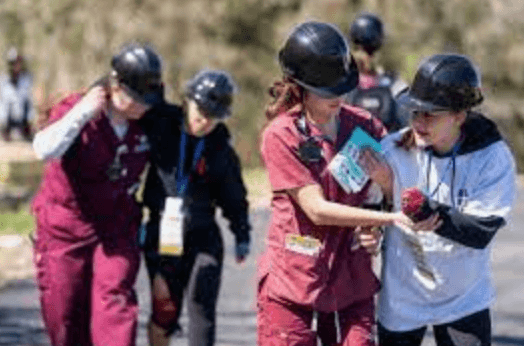
Training Simulations: Boosting Emergency Readiness
Frequently Asked Questions
1. What is emergency readiness?
2. How do training simulations benefit medical workers?
3. What types of training simulations are commonly used?
4. What challenges do organizations face when implementing training simulations?
5. How can healthcare organizations effectively integrate training simulations into their existing programs?
In today’s fast-paced world, emergency readiness is not just a necessity but a requirement for the well-being of our communities. Training simulations have gained prominence as essential tools in preparing individuals, particularly medical workers, for crises. This blog post explores the multifaceted effects of training simulations on emergency readiness, emphasizing their significance and diverse applications.
The Importance of Emergency Readiness
Emergency readiness involves the preparedness of individuals and organizations to respond effectively in critical situations. Whether it’s a natural disaster, a medical emergency, or a public health crisis, the level of preparedness can significantly influence outcomes. For medical workers, emergency readiness can mean the difference between life and death.
Effective response strategies not only save lives but also reduce injuries and facilitate quicker recoveries. This is particularly vital in healthcare settings, where medical professionals are accountable for a multitude of lives at any given moment. However, just possessing knowledge is insufficient. Practical experience through training simulations can bridge this gap.
What Are Training Simulations?
Training simulations are immersive educational environments that replicate real-life scenarios. They can range from virtual reality experiences to role-playing exercises conducted in a controlled setting. These simulations are designed to provide hands-on experience that mirrors actual emergency situations.
Types of Training Simulations
There are several types of training simulations that organizations utilize:
- Virtual Reality (VR): VR simulations immerse participants in a virtual world, allowing them to practice responses without the risk associated with real-life emergencies.
- Tabletop Exercises: These simulations involve discussion and analysis of hypothetical emergency scenarios in a group setting.
- Live Action Role Play: Participants act out responses in real-time, bringing a practical understanding of team dynamics and decision-making processes.
- Computer-Based Simulations: Interactive software that allows individuals to navigate through emergency scenarios at their own pace.
The Benefits of Training Simulations for Medical Workers
Training simulations offer numerous advantages, especially for medical workers. Below are some of the key benefits:
Enhanced Skill Development
One of the primary advantages of using simulations is the opportunity for skill enhancement. Medical workers can develop both clinical and non-clinical skills in a safe environment. This enables them to refine their techniques, improve decision-making, and enhance team coordination without the fear of making mistakes.
Increased Confidence
Confidence is crucial in emergency situations. Training simulations help medical workers gain familiarity with possible emergency scenarios. As they practice these scenarios repeatedly, their confidence levels increase, leading to improved performance in real-life situations.
Interdisciplinary Collaboration
Emergencies often require the collaboration of various healthcare professionals. Training simulations can facilitate interdisciplinary training, allowing different medical specialties to work together. This promotes better communication, understanding, and teamwork, which are essential components in crisis management.
Real-Time Feedback and Evaluation
Through simulations, participants can receive immediate feedback on their performance. This instant evaluation allows medical workers to identify areas for improvement and adjust their strategies accordingly. Continuous improvement is vital in the ever-evolving healthcare landscape.
Empirical Evidence of Effectiveness
Numerous studies have demonstrated the effectiveness of training simulations in emergency preparedness. Research indicates that healthcare professionals exposed to simulations perform better in actual emergencies compared to those who have only received theoretical training. A study published in the Journal of Medical Education showed that simulation-based learning significantly improved clinical skills and critical thinking among medical students and professionals.
Additionally, the Global Simulation Research Network reported that institutions implementing simulation training observed marked improvements in emergency response times and procedural accuracy in real-life scenarios. Such evidence reinforces the value of integrating simulations into training programs for medical personnel.
Challenges and Limitations of Training Simulations
While the benefits of training simulations are abundant, there are also challenges and limitations to consider:
Resource Intensity
Creating realistic and effective training simulations can be resource-intensive. From the costs associated with high-tech equipment to the time commitment needed for setup and execution, organizations must be prepared to allocate appropriate resources.
Variability in Learning Outcomes
Not all individuals learn the same way. Some medical workers may excel in a simulation environment, while others might struggle. It’s essential for instructors to tailor training approaches to accommodate different learning styles to maximize effectiveness.
Potential Over-Reliance on Technology
While technology can enhance simulation training, there’s a risk that over-reliance on technical aspects may detract from the essential human elements of care. Medical professionals must balance their technical training with the empathic and interpersonal skills needed for patient-centered care.
Integrating Training Simulations into Existing Programs
The next challenge for healthcare organizations is integrating training simulations into their existing training programs. Here are a few tips on how to do that effectively:
Assessment of Current Training Programs
Before incorporating simulations, organizations must evaluate their current training protocols. Identifying gaps in readiness can help determine where simulations may be most beneficial.
Collaboration with Experts
Engaging with professionals who specialize in simulation training is essential. These experts can provide insights on best practices and help tailor training programs to meet the specific needs of medical workers.
Continuous Evaluation and Improvement
Once implemented, organizations should continuously evaluate the effectiveness of their simulation training programs. Soliciting feedback from participants can provide valuable insights and lead to refinements, ensuring the training remains relevant and effective.
Success Stories from Healthcare Settings
Various healthcare facilities have successfully integrated training simulations into their emergency preparedness programs. For instance, many hospitals have adopted simulation training for trauma response teams, resulting in improved response times and enhanced teamwork during actual emergencies.
Similarly, clinics are using simulations to prepare their staff for outbreaks and public health emergencies. This preparedness has proven beneficial in real crisis situations, allowing medical teams to respond effectively and efficiently.
The Road Ahead: Future of Training Simulations
As technology continues to evolve, so do the capabilities of training simulations. The integration of artificial intelligence (AI) and machine learning is paving the way for even more advanced simulation environments that can adapt scenarios based on real-time responses.
Additionally, remote simulation training via virtual platforms is becoming more prevalent. This allows for wider accessibility, enabling medical workers, regardless of location, to participate and refine their skills. The future holds immense potential for enhancing emergency readiness through ongoing advancements in simulation training.
Transforming Emergency Preparedness
In summary, training simulations are proving to be invaluable resources for enhancing emergency readiness, especially among medical workers. The experiential learning they provide fosters skill development, builds confidence, and encourages collaboration among healthcare professionals. As we look ahead, embracing and evolving these training methods will be crucial in preparing our medical teams for any emergency, ultimately enhancing community resilience.
Investing in training simulations is an investment not just in the healthcare workforce but in the safety and well-being of our entire community. The road to better emergency preparedness is paved with the lessons learned through practice, engagement, and dedication to excellence.




